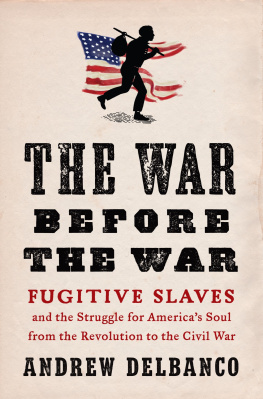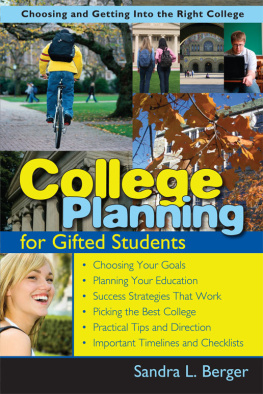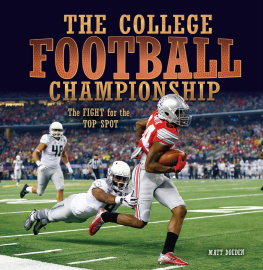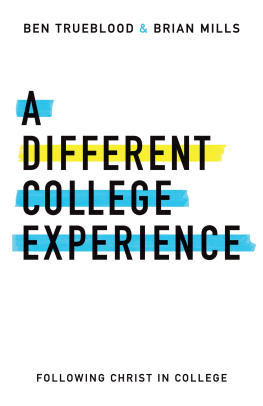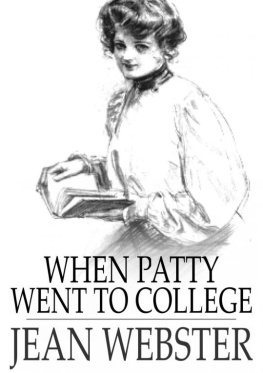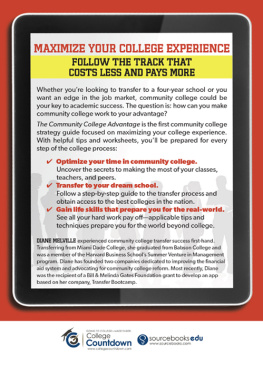Delbanco - College: what it was, is, and should be
Here you can read online Delbanco - College: what it was, is, and should be full text of the book (entire story) in english for free. Download pdf and epub, get meaning, cover and reviews about this ebook. City: Princeton;N.J;United States, year: 2012, publisher: Princeton University Press, genre: Romance novel. Description of the work, (preface) as well as reviews are available. Best literature library LitArk.com created for fans of good reading and offers a wide selection of genres:
Romance novel
Science fiction
Adventure
Detective
Science
History
Home and family
Prose
Art
Politics
Computer
Non-fiction
Religion
Business
Children
Humor
Choose a favorite category and find really read worthwhile books. Enjoy immersion in the world of imagination, feel the emotions of the characters or learn something new for yourself, make an fascinating discovery.

- Book:College: what it was, is, and should be
- Author:
- Publisher:Princeton University Press
- Genre:
- Year:2012
- City:Princeton;N.J;United States
- Rating:5 / 5
- Favourites:Add to favourites
- Your mark:
- 100
- 1
- 2
- 3
- 4
- 5
College: what it was, is, and should be: summary, description and annotation
We offer to read an annotation, description, summary or preface (depends on what the author of the book "College: what it was, is, and should be" wrote himself). If you haven't found the necessary information about the book — write in the comments, we will try to find it.
College: what it was, is, and should be — read online for free the complete book (whole text) full work
Below is the text of the book, divided by pages. System saving the place of the last page read, allows you to conveniently read the book "College: what it was, is, and should be" online for free, without having to search again every time where you left off. Put a bookmark, and you can go to the page where you finished reading at any time.
Font size:
Interval:
Bookmark:
COLLEGE
ANDREW DELBANCO
What It Was, Is, and Should Be

Copyright 2012 by Princeton University Press
Published by Princeton University Press, 41 William Street,
Princeton, New Jersey 08540
In the United Kingdom: Princeton University Press, 6 Oxford Street,
Woodstock, Oxfordshire OX20 1TW
press.princeton.edu
All Rights Reserved
Library of Congress Cataloging-in-Publication Data
Delbanco, Andrew, 1952
College : what it was, is, and should be / Andrew Delbanco.
p. cm.
Includes bibliographical references and index.
ISBN 978-0-691-13073-6 (alk. paper)
1. Education, HigherAims and objectivesUnited States. I. Title.
LA227.4.D455 2012
378.73dc23 | 2011039399 |
British Library Cataloging-in-Publication Data is available
This book has been composed in Garamond Premier Pro and Trajan Pro
Printed on acid-free paper.
Printed in the United States of America
10 9 8 7 6 5 4 3 2 1
The true college will ever have one goalnot
to earn meat, but to know the end and aim
of that life which meat nourishes.
W.E.B. DuBois
To my students
When colleagues heard that I was writing a book about college, they would sometimes ask me why. It seemed to me a surprising question, like asking a doctor why she is interested in hospitals and patients, or an architect why he cares about buildings and the people who live or work in them. It is true that most books on this subject are written by scholars who study it as a professional specialty, or by retired presidents who have led one kind of academic institution or another. So why would a professor of American literature distract himself with it? Occasionally, the question even carried a hint of suspicion or disapproval, as if I were losing interest in my field.
I have two answers, which seem worth stating here at the outset of the book that I ended up writing. The first can be stated very briefly. Undergraduate educationhow its purposes and practices have been expressed and enactedis a fascinating part of Americas history. I hope this book will convey some sense of that fascination.
The second answer is a little more extended, and requires a story. Soon after I arrived at Columbia University twenty-six years ago, a meeting of the college faculty was called to discuss the latest budget crisis. (There is always a crisisbut this one was especially severe.) At that meeting, the president of the university announced that the deficit in the budget of the arts and sciences division, of which the undergraduate college is a main part, was growing so rapidly that he had no choice but to urge an end to Columbias policy of need-blind admissions in order to rein in expenditures on financial aid. As a new arrival, I was unfamiliar with most of my new colleagues, but I recognized a number of distinguished faculty in the room. One by one, they rose in protest. They said that the presidents proposal would not stand. They said that the policy of need-blind admissions expressed a basic value: that our college must be open to any qualified applicant regardless of financial means. A motion was made, and passed by acclamation, that the faculty would give back a percentage of its scheduled salary raise to be paid into the pool of funds reserved for financial aid. The president retreated, and the need-blind admissions policy was retained.
Of course, I voted yes. Like Ishmael in Moby-Dick, I was one of that crew; my shouts had gone up with the rest; my oath had been welded with theirs. And, like Ishmael vowing to join the hunt for the white whale, I had no idea of what I was saying. On my way across campus after the meeting, I confessed to myself that need-blind admissions, though it sounded like justice and fairness and goodness itself, was for me just a slogan. I had no grasp of what it meant. Where did the idea come from? Who decides who needs what? What does the policy cost? How is it paid for?
I dont think my ignorance was unusual. Faculty often know next to nothing about how the institutions in which they work became what they are, how they are organized, where the lines of authority begin and end, or just about anything else outside their home department or division. In some ways, this disconnectedness is a good thing. It allows the freedom to concentrate on whatever subject stirs the passion and made academic work exciting in the first place. But in other ways it is a problem, because it hinders faculty from participating in the life of their college or university as informed citizens.
In the years following that meeting, I undertook to educate myself about American higher education so I could better understand certain central questionsnot just about admissions and financial aid, but about curriculum, teaching techniques, the financial structure of academic institutions, and, more generally, the premises and purposes of college education. In so doing, I followed the principle that governs my own teachingthat in order to comprehend problems of the present, it is helpful to know something about the past. After a while, I organized a colloquium for graduate studentsfuture facultyto discuss the history, current state, and prospects for colleges and universities in the United States. With my colleague Roger Lehecka, former Columbia College dean of students, I also began to teach a course for undergraduates about equity and access in American higher education. Eventually, when I felt I had become reasonably informed about these issues, I began to write about them. This book is the result.
I hope it will be a useful book not only for present and future college faculty, but for present and future college students as well. And at a time when Americans are bombarded with sound-bites and half-truths about our colleges and universitiesabout their high cost, low student achievement, (putatively) pampered faculty, and so onI also have had a broader audience in mind. Its my hope that anyone concerned with what it means, and what it takes, to educate citizens in our republic will find some interest here too.
New York City
September 2011
COLLEGE
Imagine a list of American innovations that would convey some sense of our nations distinctiveness in the world. Depending on the list-makers mood, it might include the atom bomb, jazz, the constitutional rights of criminal defendants, abstract expressionism, baseball, the thirty-year fixed rate mortgage, and fast food. Everyone would have a different version; but unless it included the American college, it would be glaringly incomplete.
At least in a vague way, we all know this. Americans, particularly those in or aspiring to the middle class, talk about college all the timefrom the toddlers first standardized test, through the nail-biting day when the good or bad news arrives from the admissions office, to the yellow, bald, toothless meetings in memory of red cheeks, black hair, and departed health, as Ralph Waldo Emerson described his twentieth college reunion nearly two centuries ago (men aged more quickly in those days). The best week of the year for your local news vendor is probably the week U.S. News & World Report comes out with its annual college rankings issue. Rival publications from Playboy to Princeton Review peddle their own lists of best party colleges, best green colleges, best for minorities, best for cost versus value, and, of course, their versions of the best of the best. If you Google the word collegeeven if you screen out such irrelevancies as electoral college or college of cardinalsyou run the risk of overloading your computer. When I tried it not long ago, I got 52,800,000 hits.
Next pageFont size:
Interval:
Bookmark:
Similar books «College: what it was, is, and should be»
Look at similar books to College: what it was, is, and should be. We have selected literature similar in name and meaning in the hope of providing readers with more options to find new, interesting, not yet read works.
Discussion, reviews of the book College: what it was, is, and should be and just readers' own opinions. Leave your comments, write what you think about the work, its meaning or the main characters. Specify what exactly you liked and what you didn't like, and why you think so.

